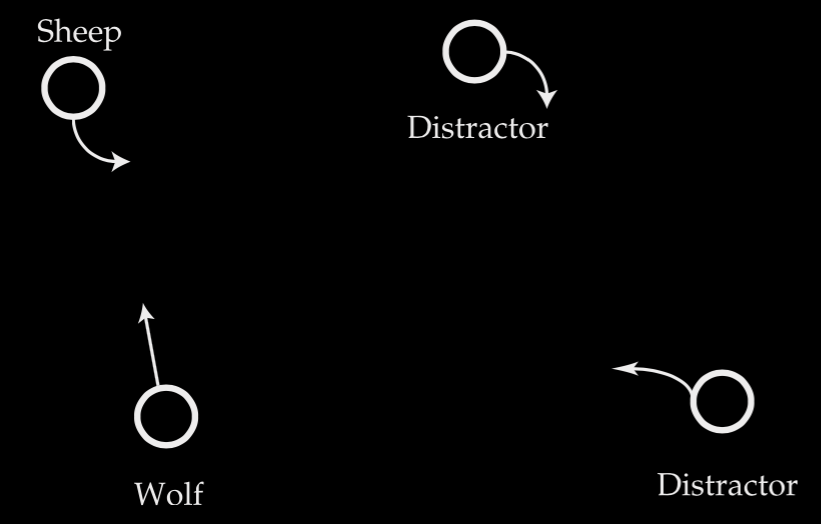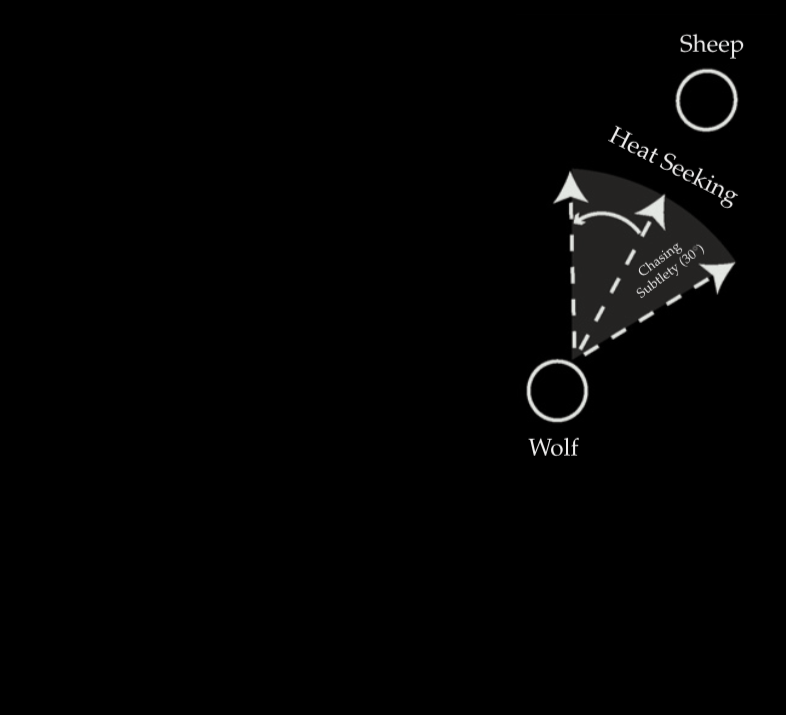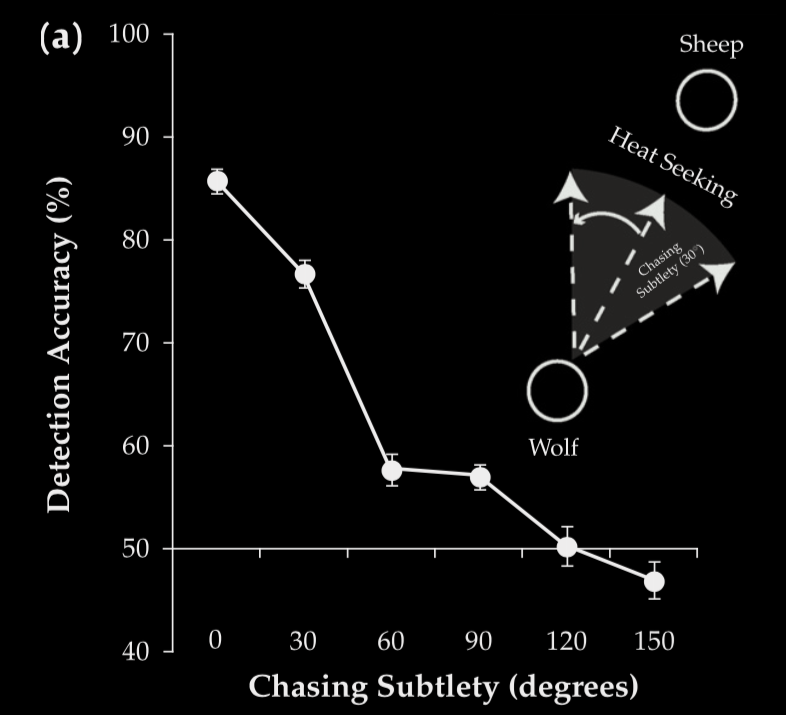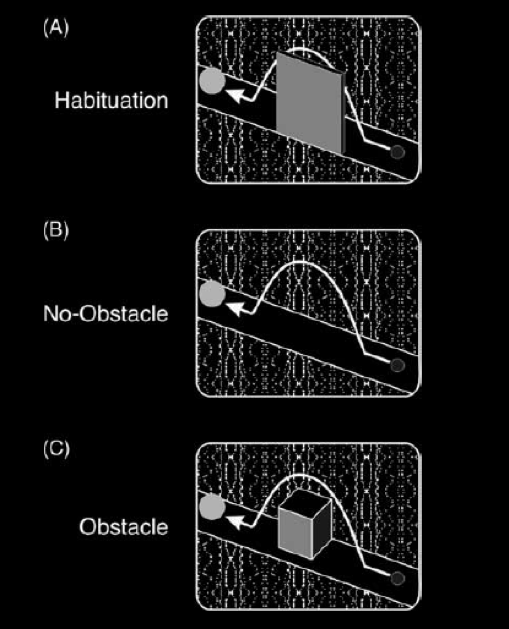Click here and press the right key for the next slide (or swipe left)
also ...
Press the left key to go backwards (or swipe right)
Press n to toggle whether notes are shown (or add '?notes' to the url before the #)
Press m or double tap to slide thumbnails (menu)
Press ? at any time to show the keyboard shortcuts
Perceptual Animacy
Perceptual Animacy

Gao et al, 2009 figure 2

Gao et al, 2009 figure 3b

Gao et al, 2009 figures 3b, 4a
| pure goal-tracking | perceptual animacy | |
| What is tracked? | actions & goals | animate objects & targets |
| Computational description? | Teleological Stance | spatio-temporal heuristics (e.g. subtlety, directionality) |
| Processes & representations? | motoric | perceptual |
Motor Conjecture Revised
In 9-month-olds,
all pure goal-tracking is explained by the Motor Theory;
appearances that goal-tracking is not limited by their abilities to act are due to perceptual animacy.
Predictions
Where 9-month-olds appear to be tracking goals
in ways not limited by their abilities to act,
they will be subject to signature limits of perceptual animacy
(e.g. subtlety, directionality);
and the processes underlying their abilities will be broadly perceptual.
Puzzles
In infants under 10 months,
it appears that
some,
but not all,
goal-tracking is limited by their abilities to act ...
... and that goal-tracking sometimes manifests in dishabitution or pupil dilation but not proactive gaze.
objection


Gao et al, 2009 figure 3b; Csibra et al 2003, figure 6

further complication: associative learning for sequencing
Gredebäck & Melinder, 2010